Achieving a shallow depth of field is one of the most difficult challenges that photographers face.
Depth of field is defined as the distance between what’s in focus and what’s blurry.
This can be achieved by using either a wide aperture or moving your subject (or both) away from the camera to create an intentional blurriness in some areas.
DEEP DEPTH OF FIELD
What Is Deep Depth Of Field?
Deep depth of field is an advanced cinematography and photography technique that produces photographs with a very narrow, deep plane of focus.
This can be achieved by using either a large aperture size or by combining the use of small aperture sizes and long focal lengths.
The result will produce images with pleasing blur in the foreground and background.
In the world of photography, deep depth of field is our secret weapon for capturing vast landscapes and intricate details in a single shot.
It’s the technique that keeps everything from the foreground to the horizon sharply in focus, allowing us to create images that truly tell a story.
We’ll explore how deep depth of field can transform your photography, from the science behind it to practical tips for mastering this powerful tool.
Stay with us as we jump into the depths of field and unlock the potential of your camera’s lens.
What Is Deep Depth Of Field
Exploring the crux of deep depth of field – we find it’s all about clarity.
When every element of your frame, from the nearest to the farthest point, is in sharp focus, that’s deep depth of field at work.
In filmmaking, this technique is essential when we want viewers to soak in the entirety of the scene we’re presenting.
Whether we’re capturing the endless depths of a cityscape or the intricate details of a complex action sequence, deep depth of field ensures nothing escapes the audience’s eye.
This technique is particularly effective in genres where the setting acts almost as an additional character – think the vast landscapes in Lawrence of Arabia or the bustling foreground and background in The Grand Budapest Hotel.
Achieving this level of focus depth hinges on several factors:
- Aperture settings that are small (denoted by higher f-stops),
- The focal length of the lens,
- The distance from the subject.
Manipulating these elements allows us to craft a scene where every detail commands attention.
It enhances the visual narrative by inviting the audience to explore every inch of the visual space.
In the realm of digital marketing, this approach can be equally effective.
It allows us to present products in a lifestyle setting, with every aspect crisp and clear.
This can trigger a stronger connection with the consumer, who can picture the product in their own life without any distracting blur.
Our pursuit of mastering deep depth of field continues with understanding its applications in various shooting environments and how it complements different storytelling techniques.
Let’s jump further into the ways we can harness this vast focus to our advantage.
Why Deep Depth Of Field Matters In Photography
Deep depth of field is a cornerstone in visual storytelling.
It allows us to compose scenes that give viewers a comprehensive understanding of the environment.
In genres such as epic dramas or detailed documentaries, maintaining sharpness throughout the frame is pivotal to convey the grandeur or complexity of a scene.
Films like Lawrence of Arabia showcase vast desert landscapes in which every grain of sand seems discernible.
Establishing a sense of scale and position is another reason deep depth of field is invaluable.
It’s not just about clarity but about providing a context for where the action takes place.
Think about The Grand Budapest Hotel – the elaborate sets full of intricate details play a crucial role, and capturing them in full clarity is essential for the narrative to resonate.
Our choice of depth of field also affects the viewer’s emotional connection with the scene:
- Deep depth of field – pulls audiences into the environment, making them a part of the full picture.
- Shallow depth of field – isolates subjects, focusing attention on specific elements while softening the rest.
Understanding the technical aspects of achieving this effect is crucial for us as filmmakers.
Knowing how to manipulate aperture settings, select the right focal length, and position ourselves relative to our subject informs the success of this technique.
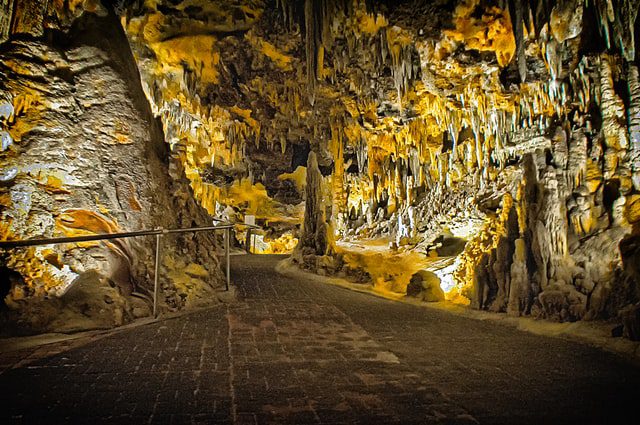
It’s these decisions that give us control over the look and feel of our shots, letting the audience’s eye travel through the scene just as intended.
In the realm of digital marketing, deep depth of field can be equally impactful.
It can transform a simple product shot into a lifestyle scene, implying usage and environment that resonate with potential customers.
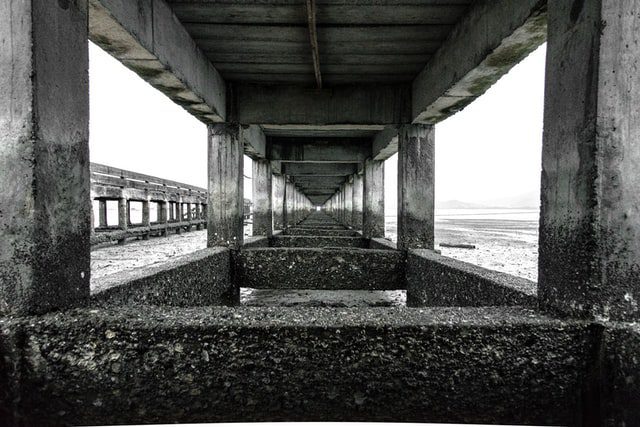
Engaging visuals that tell a story are more likely to capture attention and drive interaction, proving just how pivotal depth of field is in our craft.
The Science Behind Deep Depth Of Field
Understanding deep depth of field requires a grasp on a few fundamental principles About light and optics.
At the heart of this phenomenon lies the aperture – the opening through which light passes into the camera.
A narrow aperture, denoted by a higher f-stop number, lets in less light but increases the depth of field.
Conversely, a wider aperture allows more light to hit the sensor but narrows the focal plane.
But that’s not all there is to it.
The focal length of the lens and the camera-to-subject distance play crucial roles as well.
Here’s what affects deep depth of field:
- Lens Focal Length – Shorter focal lengths tend to offer a deeper depth of field.
- Distance – The further the subject is from the camera, the deeper the depth of field.
- Sensor Size – Cameras with larger sensors can achieve a deeper depth of field at the same f-stop as those with smaller sensors.
With these components in balance, cinematographers and photographers can achieve a deep depth of field, ensuring that both the foreground and background remain in clear focus.
This technique is invaluable in storytelling, where clarity throughout the scene is essential.
In the realm of digital marketing, this crisp, all-encompassing focus can be particularly effective.
Products and services are showcased with vivid detail, drawing consumers into the scene.
By manipulating these elements, creatives craft images that harness the power of depth, inviting viewers into an immersive experience.
It’s this meticulous manipulation of depth that distinguishes professionals from amateurs.
Factors Affecting Deep Depth Of Field
Understanding the elements that influence deep depth of field helps us to harness its potential whether we’re aiming for a sweeping landscape or a bustling street scene in our filmmaking projects.
Let’s jump into the key factors that bring every layer of our scene into sharp relief.
Aperture is a critical setting that affects depth of field.
A small aperture – indicated by a higher f-stop number – creates a deeper depth of field.
This means that setting the aperture to f/16 will result in most elements from the foreground to the background appearing crisp and clear.
Focal length also plays a pivotal role in depth of field.
Wider lenses tend to offer greater depth of field compared to telephoto lenses.
The wider the lens:
- The greater the depth of field,
- The more of the scene is in focus.
Distance to the subject is another important consideration when striving for deep depth of field.
The farther the camera is from the subject:

- The deeper the depth of field,
- The more the background and foreground will be in focus.
finally, sensor size can significantly impact depth of field.
Cameras with larger sensors provide a shallower depth of field at the same aperture settings as cameras with smaller sensors.
hence, when deep depth of field is the goal:
- It’s often advantageous to use cameras with smaller sensors,
- Or to adjust other settings to compensate for larger sensor sizes.
These factors are essential tools in our filmmaking arsenal.
By mastering the interplay between aperture, focal length, subject distance, and sensor size, we can achieve the perfect deep depth of field for our narrative, serving the story we’re telling.
How To Achieve Deep Depth Of Field In Your Photos
Achieving deep depth of field requires understanding how lens settings interact with the scene.
We’ll need to manipulate our aperture, focal length, and distance to the subject.
Small aperture sizes – such as f/16 or f/22 – are vital for a deep depth of field.
They ensure a greater area of your scene is in focus.
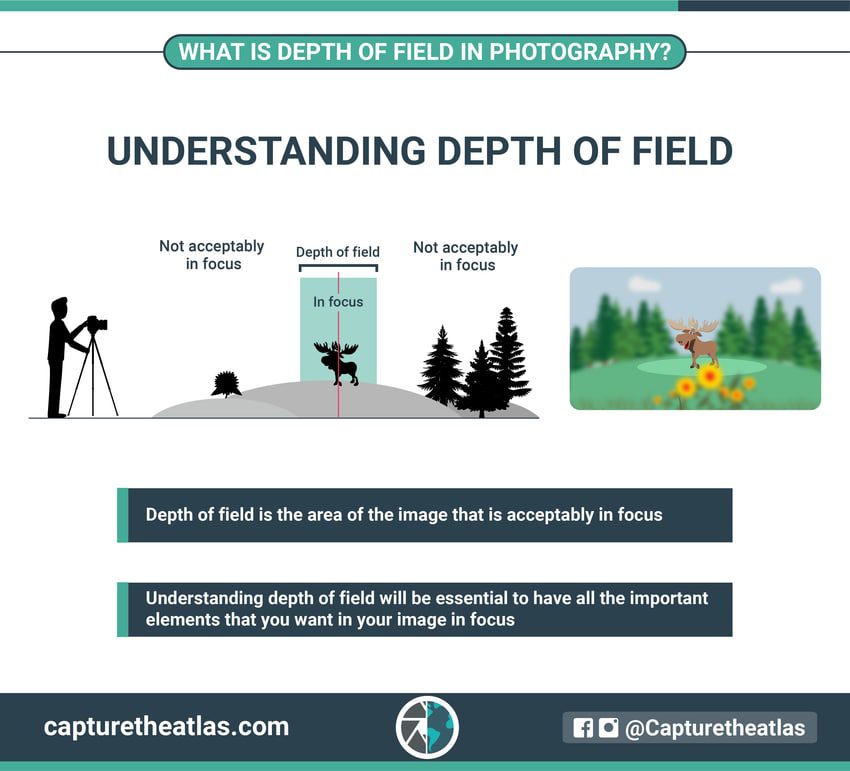
But, remember that smaller apertures let in less light which could affect exposure.
Our choice of lens can also play a significant role.
Opt for lenses with shorter focal lengths as they inherently provide a deeper depth of field compared to telephoto lenses.
Distance affects depth of field, perhaps more subtly than aperture or focal length.
Increasing the distance between the camera and the subject can result in more elements within the frame being in sharp focus.
Sensor size is another contributing factor.
Cameras with larger sensors generally have a shallower depth of field at equivalent apertures and focal lengths.
So for deeper depth of field, consider using a camera with a smaller sensor.
Here are steps to maximize deep depth of field –
- Set your camera to a high f-number,
- Choose a wider lens with a shorter focal length,
- Pull back from your subject to include more of the scene,
- If possible, opt for a camera with a smaller sensor size.
Lighting may require adjustments due to smaller apertures.
Ensure your scene is well-lit or consider boosting your ISO slightly.
By tweaking these settings, filmmakers can create images with a sense of vastness and detail that serve the narrative.
Whether it’s a sweeping landscape or a bustling street scene, mastering deep depth of field is an artistic and technical skill that can elevate the visual storytelling in film.
Practical Tips For Using Deep Depth Of Field
Achieving a deep depth of field is essential for scenes requiring clarity across all planes.
We’ll explore practical tips to ensure every detail stands out, whether for dynamic landscapes in an Indie Film or detailed shots in a commercial.
Choose the right aperture a small aperture is key – that’s f/11 or higher. This narrow opening maximizes depth of field but requires more light, which may call for additional lighting or adjustments to iso settings.
Opt for shorter focal lengths wider lenses have inherently deeper depth of field.
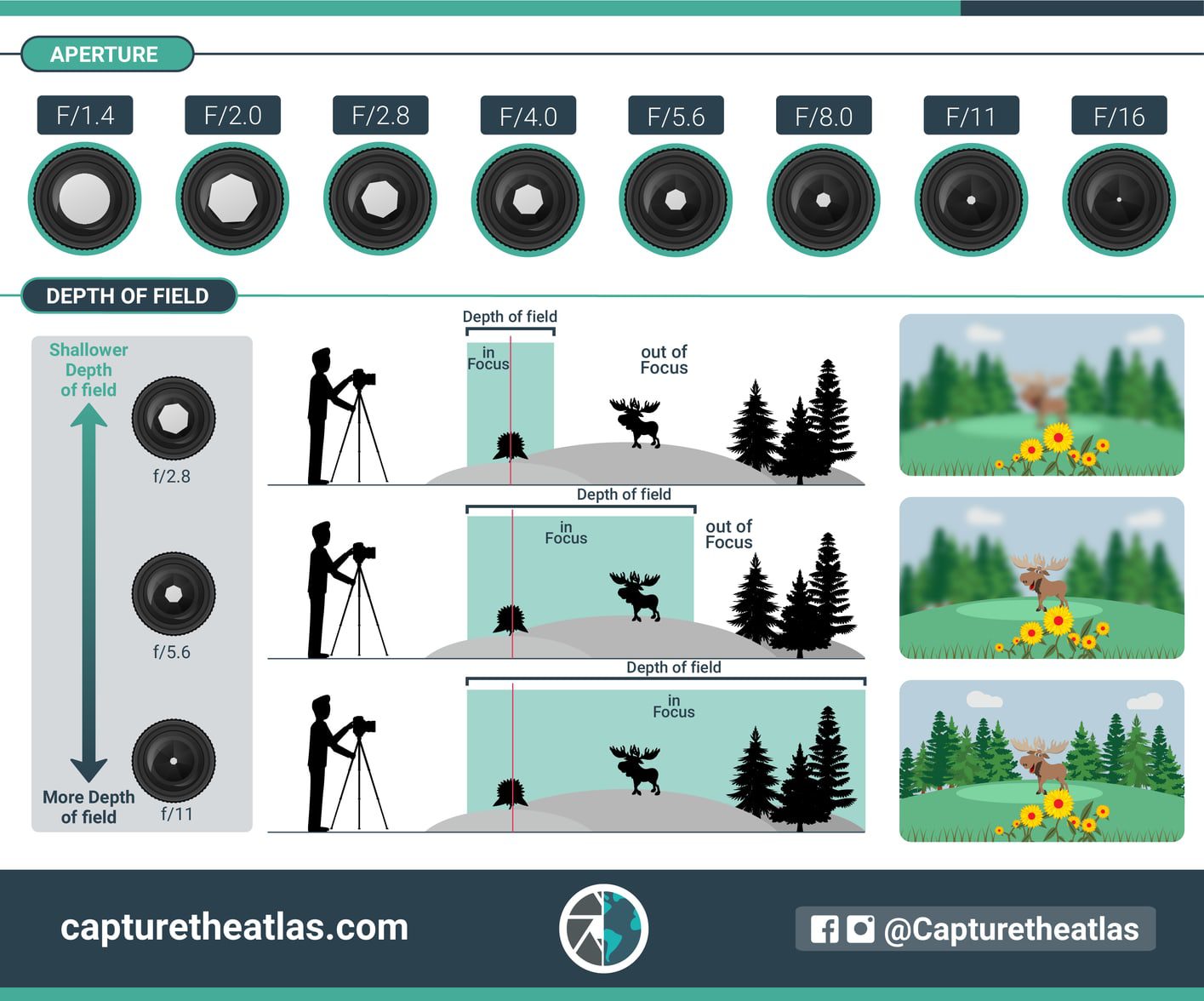
This means choosing lenses with short focal lengths will help keep more of your scene in focus, from foreground objects to distant backgrounds.
Increase camera-to-subject distance the farther away the camera is from the main subject, the deeper the depth of field becomes.
Filmmakers can use this by planning shots that place subjects at a moderate distance, enhancing focus throughout the frame.
Be mindful of sensor size sensor size impacts the depth of field.
Larger sensors typically need narrower apertures to achieve the same depth of field as smaller sensors, so adjust your settings accordingly.
Use Hyperfocal Focusing
Hyperfocal focusing ensures maximum sharpness from half the hyperfocal distance to infinity.
To achieve this:
- Determine the hyperfocal distance for your lens,
- Focus the lens at this point,
- Everything from half this distance to infinity will be in acceptable focus.
Understanding these techniques can dramatically impact the visual storytelling of your projects.
By adjusting aperture, focal length, and focusing tactics, we can direct viewer attention and convey a story with sharp, precise imagery.
From crafting wide-spanning vistas in Lawrence of Arabia to capturing the intricate design of tech gadgets, deep depth of field lays the foundation for unrivaled clarity and storytelling precision.
Examples Of Deep Depth Of Field In Photography
Understanding deep depth of field is easier with visual examples, and there’s no shortage in celebrated photography and cinematography.
Landscape photography often showcases this technique where every detail of the scenery, from the rocks in the foreground to the mountains in the distance, is crisp and clear.
In filmmaking, deep depth of field is key for establishing shots that immerse viewers in a scene.
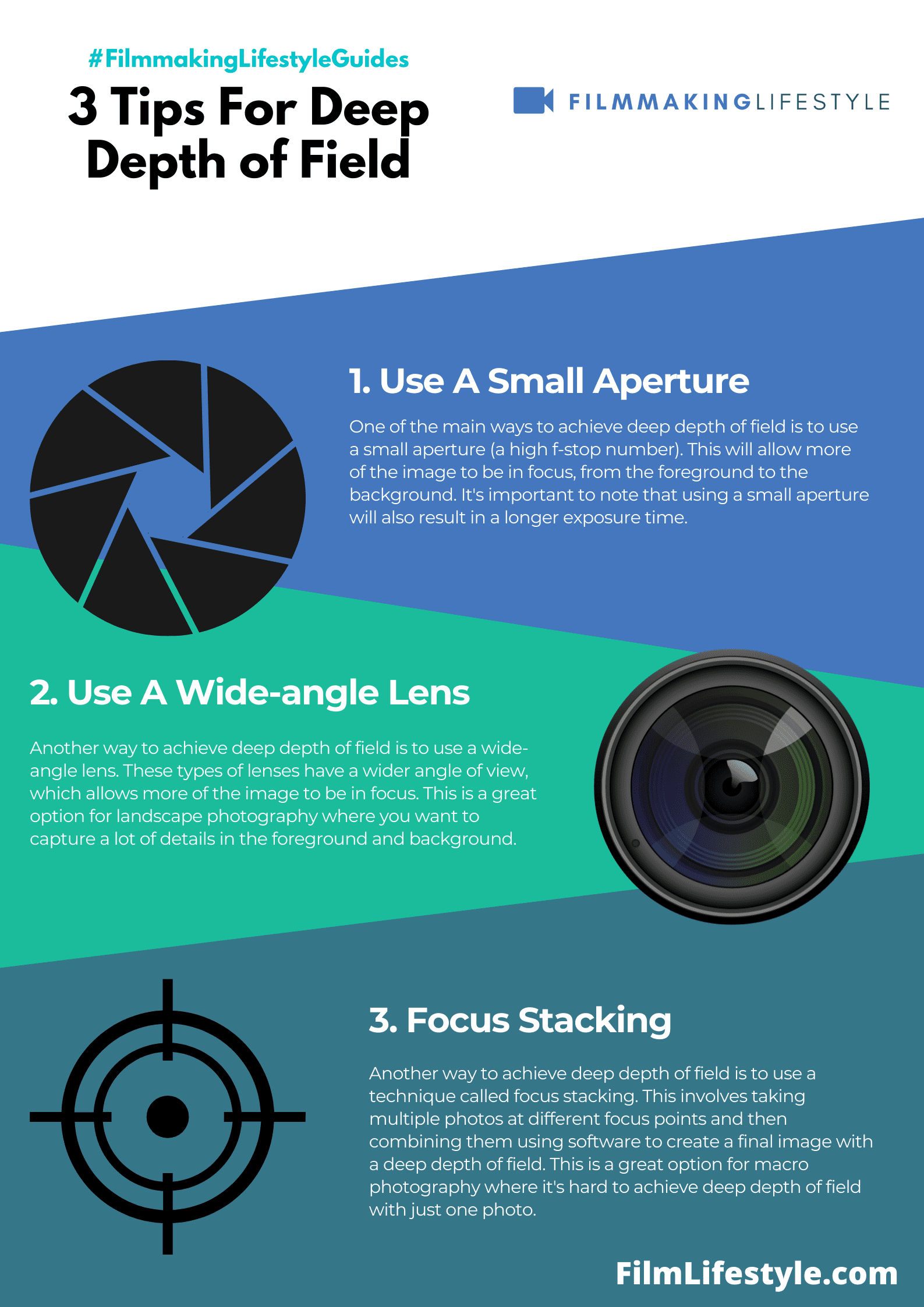
Classic films like Citizen Kane and The Grand Budapest Hotel Use deep focus to create visually rich, detailed frames that tell a story beyond the characters in focus.
But it’s not just the classics that benefit from deep depth of field.
Modern blockbusters, including The Revenant, use it to establish a connection with nature, with sweeping shots where every element of the wilderness is in sharp relief.
Even animated films like Toy Story artfully employ deep depth of field to bring the world of toys to remarkably tangible life.
As filmmakers, we also use deep depth of field in scenes where the spatial relationship between characters and their environment is pivotal.
In dialogue-heavy movies, this technique helps audiences simultaneously focus on the characters exchanging lines and the setting that contexts their relationship.
Technical wizardry aside, deep depth of field conveys a sense of hyperreality.
It effectively crafts a visual tapestry where viewers feel they can step into the screen – all elements are visible, and nothing is lost to blur.
This vivid clarity contributes to the narrative, providing viewers with the full spectrum of the visual story.
Every frame is an opportunity to showcase the mastery over depth of field.
For ambitious projects, we might consider:
- Working with wide-angle lenses for expansive scenes,
- Leveraging tilt-shift photography to manipulate focus,
- Utilizing high f-stop values while balancing light to maintain sharpness across all planes.
Through understanding and applying deep depth of field, filmmakers and photographers alike can create images that resonate with clarity and detail, harnessing the power of every pixel to tell a compelling story.
What Is Deep Depth Of Field – Wrap Up
We’ve explored the intricacies of deep depth of field and its pivotal role in producing images brimming with clarity and detail.
By mastering this technique, we can tell stories that captivate and resonate with our audience.
Whether we’re framing a sweeping landscape or a bustling city scene, deep depth of field is our ally in creating visually rich and compelling narratives.
Let’s put our newfound knowledge to the test and watch our photography and filmmaking transform.
Frequently Asked Questions
What Is A Deep Depth Of Field In Photography?
A deep depth of field refers to a large area of focus in an image, where objects from the foreground to the background appear sharp and clear.
It’s used to capture detailed scenes with multiple elements in focus.
Why Is Deep Depth Of Field Important In Visual Storytelling?
Deep depth of field is essential in visual storytelling because it allows photographers and filmmakers to create images where viewers can see clear details in both the foreground and background, enhancing the narrative and context of the scene.
How Can You Achieve A Deep Depth Of Field?
To achieve a deep depth of field, you can use a high f-stop number (like f/16 or f/22), utilize wide-angle lenses, and incorporate tilt-shift techniques to extend the area in focus.
Can Deep Depth Of Field Be Used In Filmmaking?
Yes, deep depth of field is often used in filmmaking to create a sense of scale and reveal detailed environments, contributing to the film’s narrative and visual impact.
What Practical Tips Can Improve Deep Depth Of Field In Images?
Improve deep depth of field by ensuring adequate lighting to accommodate higher f-stop numbers, using a tripod to prevent camera shake at slow shutter speeds, and focusing at the hyperfocal distance to maximize focus range.


